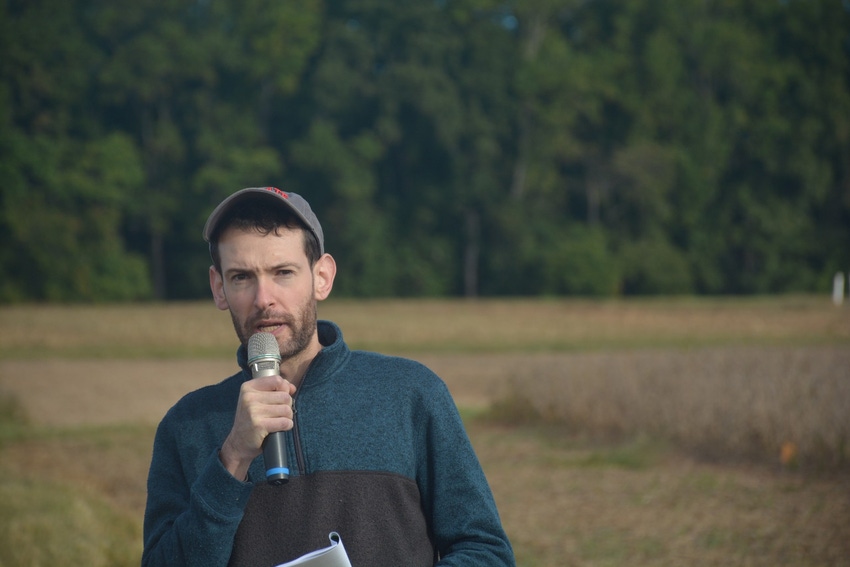
As legumes, soybeans fix their own nitrogen from the atmosphere, but farmers seeking to boost yields often consider applying nitrogen as one way to produce more beans. Research from North Carolina State University shows that adding extra nitrogen isn’t always the way to go to build yields.
Speaking at the Piedmont Soybean Field Day Sept. 28, Ben Gordon, a graduate student at North Carolina State University, highlighted fertility research conducted in sites across the state that showed no yield response to adding extra nitrogen at planting and at first flower (R1) stage.
In the research, Gordon and his team applied 20 pounds of supplemental nitrogen at planting in the form of urea. They applied another 20 pounds of nitrogen as urea at the R1 stage. The research sites were in Pender, Washington, Union and Columbus counties in 2021 and Rowan, Bertie, Johnston and Camden counties in 2022, representing different geographic areas and different soil types.
There were no yield gains at any of the research sites in 2021. The 2022 data has yet to be compiled.
Gordon said a key takeaway from the study is that the extra fertilizer nitrogen suppressed what soybeans can acquire from the atmosphere, along with microorganism help from the soil. He noted nitrogen fertilizer suppresses nodulation and biological nitrogen fixation.
“We took samples of roots and counted and weighed how much mass of nodules which were on the roots. We basically saw that when you apply nitrogen at planting or at R1 stage, it reduces the amount of nodulation for nitrogen fixation. And because there is no response to yield from that 20 pounds of nitrogen we applied at planting and at R1, it might make sense to not spend those fertilizer dollars if the crop can get all it needs from the atmosphere and have the same yield,” Gordon said at the field day.
Gordon explained that soybeans and other legumes form root nodules that host symbiotic Rhizobia bacteria that capture that nitrogen from the air. “When nitrogen fertilizer is added to the system, soybeans will use that fertilizer, and nodulation is suppressed, meaning less biological nitrogen fixation from the air.”
About the Author(s)
You May Also Like






